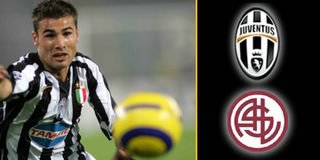aria's thoughts : emblazened sojournings
About Me

- Name: aria
- Location: Trinidad & Tobago
"The world is not what I think, but what I live through." ~ Maurice Merleau-Ponty
Sunday, November 27, 2005
Tuesday, November 22, 2005
Friday, November 18, 2005
** Phrase origins : Don't look a gift horse in the mouth

Meaning:
Don't be ungrateful when you receive a gift.
Origin:
This comes into the category of phrases known as proverbs. That is, 'short and expressive sayings, in common use, which are recognised as conveying some accepted truth or useful advice'.
As horses age their teeth begin to project further forward each year and so the age can be estimated by checking how prominent the teeth are. This incidentally is also the source of another teeth/age related phrase - long in the tooth.
The advice given in the 'don't look...' proverb is: when given a present, be grateful for your good fortune and don't look for more by examining it to assess its value.
As with most proverbs the origin is ancient and unknown. We have some clues with this one however. The phrase was originally "don't look a given horse in the mouth" and first appears in print in 1546 in 'The Proverbs of John Heywood', where he gives it as:
"No man ought to looke a geuen hors in the mouth."
Heywood is an interesting character in the development of English. He was employed at the courts of Henry VIII and Mary I as a singer, musician, and playwright. His Proverbs is a comprehensive collection of those known at the time and includes many that are still with us:
- Many hands make light work.
- Rome wasn't built in a day.
- A good beginning makes a good ending.
and so on. These were expressed in the literary language of the day, as in "would yee both eat your cake, and have your cake?", but the modern versions are their obvious ancestors.
It would be nice to be able to attribute these to Heywood himself, but it's more likely that he collected them from common parlance. He can certainly be given the credit for introducing many proverbs to a wide and continuing audience though and that includes one that Shakespeare later borrowed - "All's well that ends well".

** Juve x Roma

Capello: "An important match"
"It's an important match for both teams; there'll be top players on the pitch who are able to make a difference. Knowing the opponents well like I do is only partially an advantage since players at such a high level can change the course of the game at any time; we'll have to be careful". The one against Roma is a delicate match and Fabio Capello wants to keep concentration high:"It will certainly be a remarkable match on a professional level and it feels good to play in a stadium crowded with supporters who are always very close to their team's fate. Roma have not had a good season last year but they're now catching up and getting back on track. After all, they're a very strong side, with quality players. Our side has gathered yesterday and we've started today to prepare the match. Anyway, many of them looked serene, because of the good results with their countries. We hope we'll have the same smile on our faces on Saturday night too."
Last year's match at the Olimpico was a particularly tough one, maybe also because of the hot atmosphere that always surrounds this challenge: "We all should only think about what happens on the playground - the coach continues - and be more serene and not overload the game with too much pressure". And it's the very Capello who gives the good example: "I want to take the chance to congratulate Francesco (i.e. Totti), Mrs Ilary and little Christian and wish them the most important thing: much health, for all of their lives. Sincerely my best wish and compliments to the new parents"

Monday, November 14, 2005
* A Bout With Bird Flu

On Monday, world health ministers convened in Canada to discuss strategies for fighting the deadly strain of bird flu called "H5N1." The virulent avian virus has spread across Asia and into Europe, necessitating the slaughter of at least 150 million chickens, turkeys, geese, quail, and ducks.
Scarier still, H5N1 has jumped to mammals, including some that used to be considered immune to bird flu. We're not immune, either--though human infections so far have been few. The World Health Organization has counted just 121 laboratory-confirmed human cases since the current outbreak began in 2003.
That's the good news. The bad news is the virus continues to mutate, and many experts now believe it's endemic to parts of Asia. The more it stews, the more chances it has to mutate into a form that's highly contagious to us. And if that happens, the world could face a health crisis the likes of which it hasn't seen in decades. Conservative models say such a flu could kill 2 to 7.4 million people worldwide. Less conservative models say multiply that by ten. So, what is H5N1? And how could it become a global killer?
A Bout with Bird Flu
Scientists recognize three basic types of flu virus--type A, type B, and type C. All three can infect humans, but types B and C don't cause pandemics.
Type A influenza comes in a variety of subtypes that infect birds, pigs, horses, seals, whales, humans, and other animals. Some can cause pandemics, and some are very lethal. Today's killer bird flu, labeled H5N1, is a nasty type A flu.
A Nasty Case of Bird Flu
Scientists classify type A flu viruses according to two proteins that show up on their surfaces: hemagglutinin (the "H" in H5N1) and neuraminidase (the "N"). The "H5" influenzas, including H5N1, come in both "low pathogenic" and "highly pathogenic" varieties. In its low pathogenic form, H5N1 could spread through your henhouse unnoticed, barely ruffling feathers. But in its highly pathogenic form, it would probably kill 90 to 100 percent of the hens it infected.
Unfortunately, the nearly undetectable low pathogenic form of H5N1 can mutate into the highly pathogenic form in a matter of months. So wild birds often carry the low pathogenic form to new places, where it circulates quietly until it mutates into the deadly form.
A Nasty Case of Human Flu
All of this is clearly bad news for birds (and their keepers). But why does it worry world health officials? Because the risk of a human flu pandemic taking off from this virus is high. According to the World Health Organization, "a pandemic can start when three conditions have been met: a new influenza virus subtype emerges; it infects humans, causing serious illness; and it spreads easily and sustainably among humans."
H5N1 already meets the first two conditions. It's basically a brand new bug for humans, so the defenses our bodies have built against other strains of flu won't help. And it's deadly. More than half of the people who've been infected so far have died. The only good news is that it hasn't mutated into a strain that "spreads easily and sustainably among humans."
There are basically two ways that could happen. In one scenario, the virus gradually adapts for human transmission. That would be bad, but maybe not horrible. As the virus adapted, we'd at least get a chance to spot clusters of human cases, treat them, and develop medical defenses. In a second, more frightening scenario, a human infected with H5N1 catches another flu, too. The two flu viruses then mix their genetic materials in what's known as a "reassortment event," producing a new, fully transmissible form of the flu.
Facing little or no resistance from existing human antibodies, that flu could race around the world, spreading itself through the coughs and sneezes of people who don't even know they have it. Once international spread began, experts say, such a pandemic would be virtually impossible to control. Flu moves too fast, and the world doesn't have enough antiviral drugs. Efforts are underway to make more and to develop a vaccine. But until we have those in the medicine chest, we'll have to hope that bird flu continues to be pretty much for the birds.
~ Steve Sampson
October 26, 2005

Thursday, November 10, 2005
** MOB 5 : EXTRA READING
Quantitative vs Qualitative Decisions
http://www.bized.ac.uk/educators/16-19/business/strategy/activity/decision2.htm
** You can also do a google search for more info on this. **
REMEMBER:
- Remember the main topic under which this falls
- Summarise points briefly in notebook
http://www.bized.ac.uk/educators/16-19/business/strategy/activity/decision2.htm
** You can also do a google search for more info on this. **
REMEMBER:
- Remember the main topic under which this falls
- Summarise points briefly in notebook
Wednesday, November 09, 2005
** MOB 3 : Porter's 5 Forces Model

http://www.quickmba.com/strategy/porter.shtml
http://www.valuebasedmanagement.net/methods_porter_five_forces.html
http://www.tutor2u.net/business/strategy/porter_five_forces.htm
[** also check the link on the right here for PEST Analysis and SWOT Analysis, and bookmark this page for later use].
http://www.websitemarketingplan.com/Arts/MarketingStrategy.htm
http://www.investopedia.com/terms/p/porter.asp
[** This link can also be used for Econ class]

Saturday, November 05, 2005
** MOB 2 : Paired Comparison Analysis

Paired Comparison Analysis:
Working Out the Relative Importance of Different Options
Paired Comparison Analysis helps you to work out the importance of a number of options relative to each other. It is particularly useful where you do not have objective data to base this on.
This makes it easy to choose the most important problem to solve, or select the solution that will give you the greatest advantage. Paired Comparison Analysis helps you to set priorities where there are conflicting demands on your resources.
How to use tool:
To use the technique, first of all list your options. Then draw up a grid with each option as both a row and a column header.
Use this grid to compare each option with each other option, one-by-one. For each comparison, decide which of the two options is most important, and then assign a score to show how much more important it is.
You can then consolidate these comparisons so that each option is given a percentage importance.
Follow these steps to use the technique:
- List the options you will compare. Assign a letter to each option.
- Set up a table with these options as row and column headings.
- Block out cells on the table where you will be comparing an option with itself - there will never be a difference in these cells! These will normally be on the diagonal running from the top left to the bottom right.
- Also block out cells on the table where you will be duplicating a comparison. Normally these will be the cells below the diagonal.
- Within the remaining cells compare the option in the row with the one in the column. For each cell, decide which of the two options is more important. Write down the letter of the more important option in the cell, and score the difference in importance from 0 (no difference) to 3 (major difference).
- Finally, consolidate the results by adding up the total of all the values for each of the options. You may want to convert these values into a percentage of the total score.
As a simple example, an entrepreneur is looking at ways in which she can expand her business. She has limited resources, but also has the options she lists below:
* Expand into overseas markets
* Expand in home markets
* Improve customer service
* Improve quality
Firstly she draws up the Paired Comparison Analysis table in Figure 1:
Figure 1: Example Paired Comparison Analysis Table (not filled in):
http://mindtools.com/pages/article/newTED_02.htm
Then she compares options, writes down the letter of the most important option, and scores their difference in importance. An example of how she might do this is shown in figure 2:
Figure 2: Example Paired Comparison Analysis Table (filled in):
http://mindtools.com/pages/articles/newTED_02.htm
Finally she adds up the A, B, C and D values, and converts each into a percentage of the total. This gives these totals:
* A = 3 (37.5%)
* B = 1 (12.5%)
* C = 4 (50%)
* D = 0.
Here it is most important to improve customer service (C) and then to tackle export markets (A). Quality is not a high priority - perhaps it is good already.
Key points:
Paired Comparison Analysis is a good way of weighing up the relative importance of different courses of action. It is useful where priorities are not clear, or are competing in importance.
The tool provides a framework for comparing each course of action against all others, and helps to show the difference in importance between factors.

** FOR: MOB students ... L6

Pareto Analysis -
Selecting the Most Important Changes To Make
Pareto analysis is a very simple technique that helps you to choose the most effective changes to make.
It uses the Pareto principle - the idea that by doing 20% of work you can generate 80% of the advantage of doing the entire job*. Pareto analysis is a formal technique for finding the changes that will give the biggest benefits. It is useful where many possible courses of action are competing for your attention.
How to use tool:
To start using the tool, write out a list of the changes you could make. If you have a long list, group it into related changes.
Then score the items or groups. The scoring method you use depends on the sort of problem you are trying to solve. For example, if you are trying to improve profitability, you would score options on the basis of the profit each group might generate. If you are trying to improve customer satisfaction, you might score on the basis of the number of complaints eliminated by each change.
The first change to tackle is the one that has the highest score. This one will give you the biggest benefit if you solve it.
The options with the lowest scores will probably not even be worth bothering with - solving these problems may cost you more than the solutions are worth.
Example:
A manager has taken over a failing service center He commissions research to find out why customers think that service is poor.
He gets the following comments back from the customers:
1. Phones are only answered after many rings.
2. Staff seem distracted and under pressure.
3. Engineers do not appear to be well organized. They need second visits to bring extra parts. This means that customers have to take more holiday to be there a second time.
4. They do not know what time they will arrive. This means that customers may have to be in all day for an engineer to visit.
5. Staff members do not always seem to know what they are doing.
6. Sometimes when staff members arrive, the customer finds that the problem could have been solved over the phone.
The manager groups these problems together. He then scores each group by the number of complaints, and orders the list:
* Lack of staff training: items 5 and 6: 51 complaints
* Too few staff: items 1, 2 and 4: 21 complaints
* Poor organization and preparation: item 3: 2 complaints
By doing the Pareto analysis above, the manager can better see that the vast majority of problems (69%) can be solved by improving staff skills.
Once this is done, it may be worth looking at increasing the number of staff members. Alternatively, as staff members become more able to solve problems over the phone, maybe the need for new staff members may decline.
It looks as if comments on poor organization and preparation may be rare, and could be caused by problems beyond the manager's control.
By carrying out a Pareto Analysis, the manager is able to focus on training as an issue, rather than spreading effort over training, taking on new staff members, and possibly installing a new computer system.
Key points:
Pareto Analysis is a simple technique that helps you to identify the most important problem to solve.
To use it:
* List the problems you face, or the options you have available
* Group options where they are facets of the same larger problem
* Apply an appropriate score to each group
* Work on the group with the highest score
Pareto analysis not only shows you the most important problem to solve, it also gives you a score showing how severe the problem is.

Friday, November 04, 2005
** On the way to Juventus vs Livorno

Four days after the win against Bayern Munchen, Juventus, leaders of the league, are back on the pitch, again at the Delle Alpi stadium, to meet Donadoni's Livorno. After breaking the historical record of consecutive wins at the start of the season, winning nine times out of as many Serie A matchdays, Capello's squad was defeated for the first time this season by Milan and now they want to get back on track.
In order to do so, they'll have to beat the Tuscans, who are a solid side and on form, actually fifth-ranked in the table. The leader of this year's Livorno is striker Lucarelli, last season's top goalscorer with 24 goals, the real heart and soul of the Tuscan squad. Compared to the 2004/2005 roster, Livorno have kept the defence virtually unchanged, while they changed the midfield and attack a lot, with the departure of Vidigal and Vigiani and the arrival of Colucci, Morrone, De Ascentis, Bakayoko and Palladino.
After the harsh defeat against Inter three weeks ago, Donadoni's side have never lost, earning two wins and a draw in the last three matchdays. The Amaranto proved they feel at ease at home, conquering thirteen points out of the fifteen at stakes since the beginning of the season. However, the Tuscans had some problem playing away: one win, two draws and two defeat is what Livorno earned away from the Picchi stadium. Juventus will try to make the most of this vulnerability, in order to achieve the tenth win of the season and get back on track in their race on top of the table.
~ JUVE NEWS
















